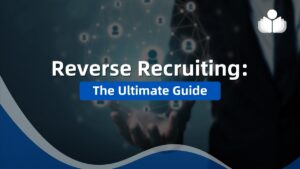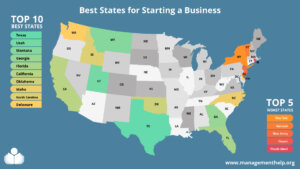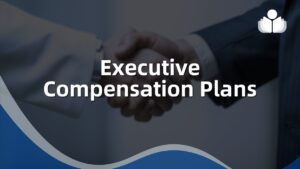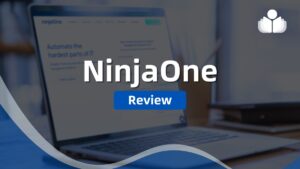Self-directed learners can use these guidelines for their personal and professional growth with their own training plans. Whether their training goals involve learning certain topics and/or skills, learners can start their learning by starting their planning.
NOTE: Do not be intimidated by the length of this framework. If you looked at a list of all of the steps necessary to go grocery shopping, you’d likely stay at home! You can complete these guidelines without being an expert. All you need is to make a commitment and take a few hours of your time — the time during which you’ll be learning, too!
Sections of This Topic Include
- Directions to Follow These Guidelines
- Preparation for Designing Your Training Plan
- Determining Your Overall Goals in Training
- Determining Your Learning Objectives and Activities
- Developing Any Materials You May Need
- Planning Implementation of Your Training Plan
- Planning Quality Control and Evaluation of Your Training Plan and Experiences
- Follow-Up After Completion of Your Plan
Also consider
Related Library Topics
Optional: Also See the Library’s Blogs Related to Designing Training and Developments Plans
In addition to the articles on this current page, also see the following blogs that have posts related to training and development. Scan down the blog’s page to see various posts. Also, see the section “Recent Blog Posts” in the sidebar of the blog or click on “Next” near the bottom of a post in the blog. The blog also links to numerous free related resources.
- Library’s Career Management Blog
- Library’s Human Resources Blog
- Library’s Leadership Blog
- Library’s Supervision Blog
- Library’s Training and Development Blog
Directions to Follow These Guidelines
Fill In This Template
As you go through each of the guidelines in this document, fill in this Learning Plan document.
If Designing a Leadership, Management or Supervisor Development Plan:
If you are designing a training plan to learn any of those topics, then follow the directions in the respective topic: How to Design Your Management Development Program, How to Design Your Leadership Development Program, or How to Design Your Supervisor Development Program. Each topic includes resources about leadership, management, or supervision and guides you through the steps in these “Complete Guidelines …”
Preparation for Designing Your Training Plan
Don’t Worry About Whether Your Plan is Perfect or Not — The Plan is Guide, Not Law
Don’t worry about whether you completely understand key terms in training or whether your plan is “perfect” or not. The key is to get started. Start simple, but start. Do the best that you can for now. There is no perfect plan. You’re doing the plan according to your own nature and needs.
Also, it’s not important to stick to the plan for the sake of the plan. The plan will likely change as you go along. That’s fine, as long as you’ve notice that it’s been changed and why.
Remember that Training and Development is a Process
So often when we design a plan, the plan becomes the end rather than the means. The plan is a general guide — the real treasure found from implementing your plan is the learning you achieve. Learning is an ongoing process.
Get Some Sense of These Basic Terms
You don’t have to be expert at the following terms — just get a general sense about them.
Training Goal
overall results or capabilities you hope to attain by implementing your training plan, e.g.,
- pass supervisor qualification test
Learning Objectives
what you will be able to do as a result of the learning activities in this plan, e.g.,
- exhibit required skills in problem solving and decision making
- exhibit required skills in delegation
Learning Methods / Activities
what you will do in order to achieve the learning objectives, e.g.,
- complete a course in basic supervision
- address a major problem that includes making major decisions
- delegate to a certain employee for one month
- etc.
Documentation / Evidence of Learning
evidence produced during your learning activities — these are results that someone can see, hear, feel, read, smell, e.g.,
- course grade
- your written evaluation of your problem solving and decision making approaches
- etc.
Evaluation
assessment and judgment on quality of evidence in order to conclude whether you achieved the learning objectives or not
The following articles might improve the quality of your training plan
The following topic might give you additional ideas of topics to learn about.
Personal Development (setting goals, learning styles, studying, taking tests, remembering, etc.)
Determining Your Overall Goals in Training
This section helps you identify what you want to be able to do as a result of implementing your training plan, for example, qualify for a certain job, overcome a performance problem or meet a goal in your career development plan, etc. Learners are often better off to work towards at most two to four goals at a time.
- Optional: You may want to re-review some of the following information:Goals — Selecting the Training and Development Goals
- Are there any time lines that you should consider in your plan?
Do you have to accomplish any certain areas of knowledge or skills by a certain time? If so, this may influence your choice of learning objectives and learning activities to achieve the objectives. (Record your time lines in the Framework to Design Your Training Plan.) - Are you pursuing training and development in order to address a performance gap?
A performance gap is usually indicated from the performance appraisal process. The performance appraisal document should already include careful description of the areas of knowledge and skills that you must learn in order to improve your performance. To understand performance gaps, see
Employee Performance Management - Or, is your plan to address a growth gap?
If so, carefully identify what areas of knowledge and skills are needed to reach your goals in your career. Consider referencing job descriptions, lists of competencies or even networking with others already in the positions that you want to reach in the near future. The following links might help you.
Job Descriptions | Competencies | Networking | Career Planning | Job Searching - Or, is your plan to address an opportunity gap?
If so, carefully identify what areas of knowledge and skills are needed to perform the job or role that soon might be available to you. Again, consider job descriptions, lists of competencies or even interviewing someone already in the job or role that may soon be available to you. The following links might help you.
Job Descriptions | Competencies | Networking | Career Planning | Job Searching - Get feedback from others
Ask for advice from friends, peers, your supervisors and others. They can be a real treasure for real-world feedback about you! For example, you (and your supervisor, is applicable) could work together to conduct a SWOT (an acronym) analysis, including identifying the your strengths, weaknesses, opportunities and any threats to reaching the your desired goals. - Should you conduct a self-assessment?
For example, you (and your supervisor, is applicable) could work together to conduct a SWOT (an acronym) analysis, including identifying the your strengths, weaknesses, opportunities and any threats to reaching the your desired goals. There are also a wide variety of self-assessments available at Self-Assessments (numerous self-assessments) - Is a list of competencies, job descriptions or job analysis available to help you identify your training and development goals?
A competencies list is a list of the abilities needed to carry out a certain role. The list can be very useful to you when identifying your learning objectives in your training and development plan. See information in the sections
Job Analysis | Job Description | Competencies - Begin thinking about how much money you will need to fund your plan.
You might need money, e.g., to pay trainers, obtain facilities and materials for training methods, pay wages or salaries for employees during attendance to training events, etc. Begin recording your expected expenses in the “Budget” section of the
Framework to Design Your Training Plan. - Identify your training goals.
By now, you should have a strong sense of what your training goals are, after having considered each of the above steps. It’s important that goals be designed and worded to be “SMARTER” (an acronym), that is, specific, measurable, acceptable to you, realistic to achieve, time-bound with a
deadline, extending your capabilities and rewarding to you. (For more guidance, see Goals and Objectives Should Be SMARTER.) Write down your training goals in the Framework to Design Your Training Plan.
Determining Your Learning Objectives and Activities
The purpose of this part of your planning is to design learning objectives that ultimately accomplish your reaching your overall training and development goals. You will also identify the learning activities (or methods) you’ll need to conduct to achieve your learning objectives and overall training goals.
- You may want to re-review information in the sections:
- Designing Training (identifying learning objectives, methods to use, etc.)
- Methods — Remembering Some Basic Principles About Adult Learning
- Methods — Some Basic Mistakes to Avoid When Selecting Methods
- Methods — Building More Learning into the Training and Development Plan
- Various Ideas for Ways to Learn
- Identify some preliminary learning objectives for each new area of knowledge or skills that you need to learn.
Carefully consider each of your training goals. What specifically must be accomplished (that is, what objectives must be reached) in order for you to reach those goals? Which of these objectives require learning new areas of knowledge or skills? These objectives are likely to become learning objectives in your training plan. Similar to the nature of training goals, learning objectives should be designed and worded to be “SMARTER”. (See Basic Guidelines and Examples for Writing Learning Objectives.) - In what sequence should the learning objectives be attained?Usually, learning builds on learning. It may be useful to learn certain areas of knowledge and skills before learning new areas.
- Carefully consider — When you have achieved all of your learning objectives, will you indeed have achieved all of your overall training goals?
Now you’re read to write down your learning objectives in the Framework to Design Your Training Plan. - What are the best learning activities (methods) for you to achieve your learning objectives?
Do the methods match your particular learning style, e.g., reading, doing or listening? Do the methods stretch your styles, too? Are the methods readily accessible to you? Do the methods take advantage of real-life learning opportunities, e.g., use on-the-job training opportunities, real-life problems that occur at work, use of projects and programs at work? Note that learning activities do always match learning objectives on a one-for-one basis. You might benefit from the following links, Some Typical Ways of Learning, Some New Ways of Learning in the Workplace and Learning Style Inventory.) - Do your learning activities include your ongoing reflections about your learning?
You (and your supervisor, if applicable) will benefit from regularly taking time to stand back and inquire about what is going on in your training, what are you learning and how, if anything should be changed, etc. Skills in reflection are critical for ongoing learning in your life and work. Consider using a private learning journal. Now you’re read to write down your learning activities in the Framework to Design Your Training Plan. - What observable results, or evidence of learning, will you produce from your learning activities that can be reviewed for verification of learning?
For ideas about what results to design into your plan, see Samples of Learner’s Results as Means to Verify Learning. Now you’re ready to write down your evidence of learning in the Framework to Design Your Training Plan. - Who will verify that each of your learning objectives were reached?
Ideally, your learning is evaluated by someone who has strong expertise in the areas of knowledge and skills required to achieve your training goals. Now you’re ready to write down your evaluator in the Framework to Design Your Training Plan. - Now that you know what activities that will be conducted, think again about any costs that will be needed, e.g., for materials, facilities, etc.
You may want to update the “Budget” section in the Framework to Design Your Training Plan. - How will you handle any ongoing time and stress management issues while implementing your plan?
Professional development inherently includes the need for self-development, as well. Therefore, you might consider information in the sections
Stress Management | Time Management | Work-Life Balance | Self-Confidence | Emotional Intelligence | Maintaining a Positive Attitude
Developing Any Materials You May Need
The goal of this phase of your planning is to obtain or develop any resources you need to conduct the activities you selected in the previous phase of the plan.
- You may want to review information in the sectionDeveloping Training Materials (developing facilities, documents, graphics, etc.)
- Consider if you need to obtain, or start:
Enrolling in courses, buying books, scheduling time with experts,
getting a mentor, scheduling time with your supervisor, etc. - Now that you’ve thought more closely about learning methods and associated materials, think again about any costs that will be needed, e.g., for materials, facilities, etc.
You may want to update the “Budget” section in the Framework to Design Your Training Plan. - Should any of your planned learning methods be pretested?Should you have anyone else use the methods and share their impressions about the methods with you? Have you briefly reviewed the methods, e.g., documentation, overheads, etc? Did you experience any difficulties understanding the methods?
Planning Implementation of Your Training Plan
The goal of this phase of your planning is to ensure there are no surprises during the implementation phase of your training.
- You may want to review information in the following sectionImplementation – Conducting or Experiencing the Training
- During your training, how will you be sure that you understand the new information and materials?
Periodically conduct a short test, e.g., everyone once in a while, try recall the main points of what you have just learned, test yourself, etc. If you are confused, tell your trainer now. - Will your learning be engaging and enjoyable?
- Are you sure that you’ll receive the necessary ongoing feedback, coaching, mentoring, etc., during your training and development activities?
Consider information in the sections
Sharing Feedback | Coaching | Mentoring | Motivating Employees | Counseling | Sustaining Morale | - Where will you get necessary administrative support and materials?
- During implementation, if any changes should be made to your plan, how will they be tracked? How will the plan be redesigned? How will it be communicated and to the right people?
Planning Quality Control and Evaluation of Your Training Plan
and Experiences
The goal of this phase of your planning is to ensure your plan will indeed meet your training goals in a realistic and efficient fashion.
- You may want to review information in the section:Evaluating Training Process and Results
- Who’s in charge of implementing and tracking your overall plan?
How will you know if the plan is on track or needs to be changed? - Consider having a local training expert review the plan.The expert can review, in particular, whether
– your training goals will provide the results desired by you (and your organization, if applicable),
– learning objectives are specific and aligned with your overall training goals,
– the best methods are selected for reaching your learning objectives, and
– your approach to evaluation is valid and practical.
You may want to update the “Budget” section in the Framework to Design Your Training Plan. - Are approaches to evaluation included in all phases of your plan?
For example, are your methods being pretested before being applied? Do you understand the methods as they’re being applied? Are regularly providing feedback about how well you understand the materials? How will the you (and your supervisor, if applicable) know if implementation of the plan achieves the training goals identified in the plan? Are there any plans for follow-up evaluation, including assessing your results several months after you completed your plan?
Follow-Up After Completion of Your Plan
This is often the part of the plan that gets neglected. In our society, we’re often so focused on identifying the next problem to solve, that few of us have the ability to acknowledge successful accomplishments and then celebrate. The design and of this plan has probably been a very enlightening experience for you — an experience that brought a perspective on learning you can apply in a great many other arenas of your life. Congratulations!
- Are follow-up evaluation methods being carried out?
- Did you (and your supervisor, if applicable) complete a successful experience to develop and implement a training and development plan? Is this accomplishment being fully recognized?Consider information in the section Reward Systems
Go to main Training and Development page.
For the Category of Training and Development:
To round out your knowledge of this Library topic, you may want to review some related topics, available from the link below. Each of the related topics includes free, online resources.
Also, scan the Recommended Books listed below. They have been selected for their relevance and highly practical nature.
 Sections of this topic
Sections of this topic
















